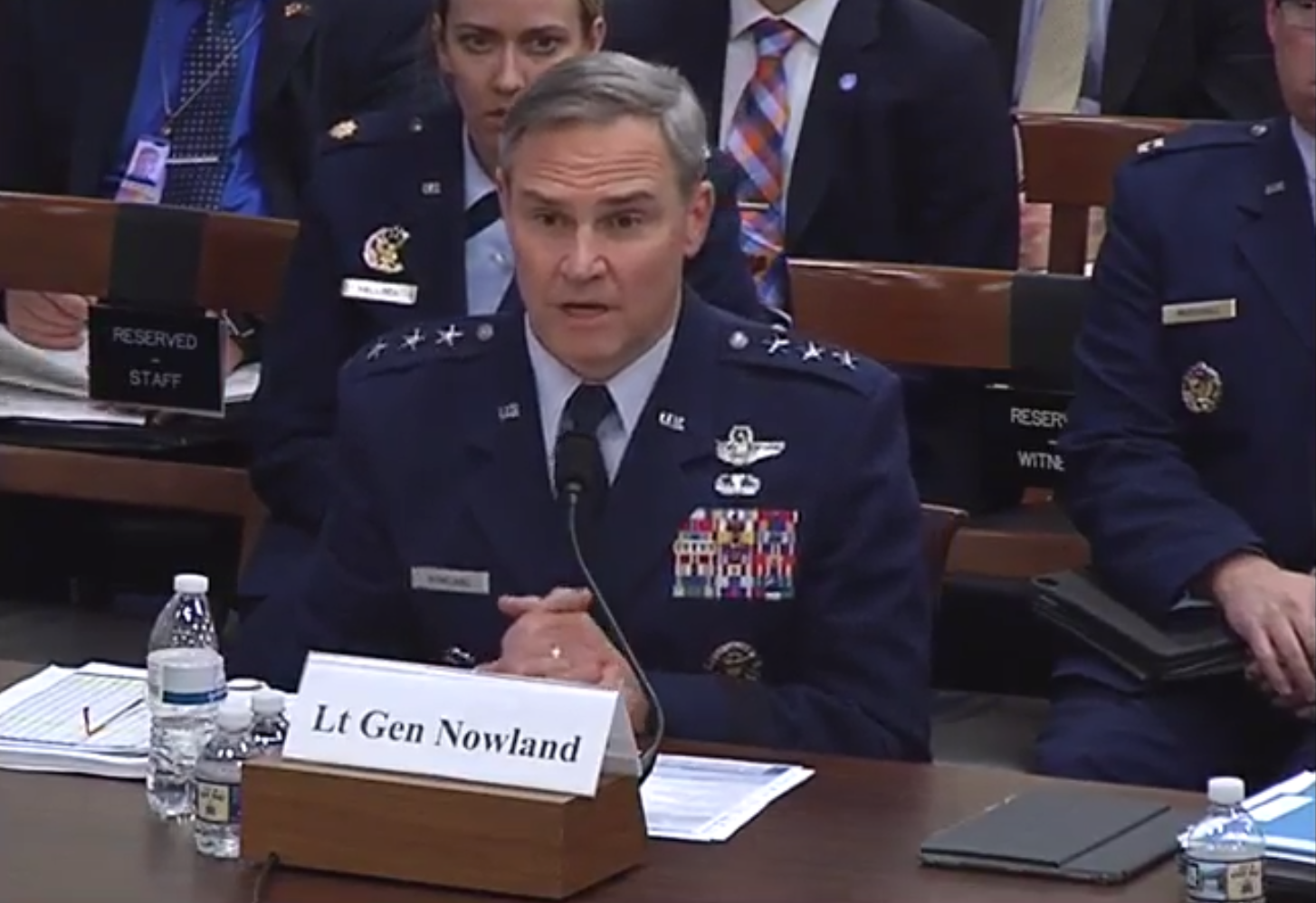
Lt. Gen. Chris Nowland, the deputy chief of staff for operations, speaks Wednesday at? a House Armed Services Readiness Subcommittee hearing. Screenshot photo.
The Air Force knows it can’t match financial incentives offered by the commercial airlines, so it’s planning to address the pilot shortfall by building up production on the front end of training.
The service is currently short about 2,000 pilots—1,300 of them in the fighter ranks. With both the current Fiscal 2019 budget request and other steps already underway to build up the training infrastructure, the Air Force wants to expand its production to 1,400 undergraduate pilots per year, keep that level steady, and “grow out of this problem,” Lt. Gen. Chris Nowland, the deputy chief of staff for operations, told the House Armed Services Readiness Subcommittee on Wednesday. In 2016, the service graduated 1,108 pilots.
“In the end, growing pilots for America and for the United States Air Force is in our best interest, and that’s what we intend to do,” Nowland said.
Air Force leadership is finalizing a list of about 60 initiatives it plans to use to address the pilot shortfall and quality of life issues, which includes ideas such as monetary bonuses along with large-scale training adjustments to pick away at the problem, Nowland said. When the initiatives are finalized and ready, the Air Force will go back to Congress to seek some help.
Some changes are already taking shape to improve pilot training at the undergraduate level as well as throughout a pilot’s career. For example, the Air Force is building up the contracted adversary air presence at Nellis AFB, Nev. With contractors flying as the bad guys, pilots at Nellis can use their “precious” cockpit training time on focusing on their own jobs, Nowland said.
The Air Force also is facing a shortfall of pilots who work in staff positions, because it has to move those airmen back into cockpits rather than having them sitting at desks, Nowland said. Recently, the service tried to address this problem by asking recently retired pilots to return to service and help out in the office jobs.
The bonus offers are largely going to focus on the most critical positions—the instructors and evaluators needed to build the newer generation of pilots, Nowland said. But the service can’t always compete with what private industry can offer an experienced pilot.
“We cannot, ultimately, control what the airlines are going to do and how much money they’re going to [offer], but we’re going to work on that production to try to increase the maximum production we can get to, while simultaneously improving their quality of life,” he said.